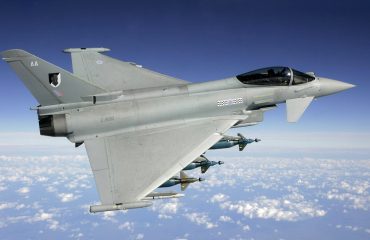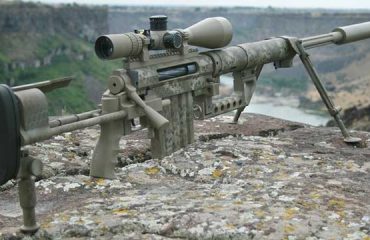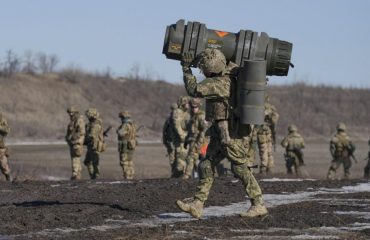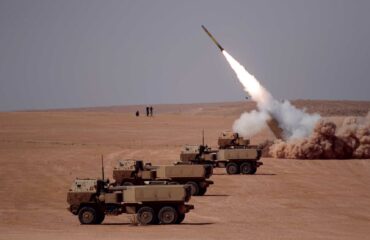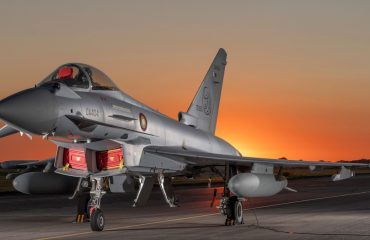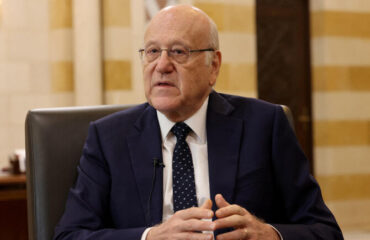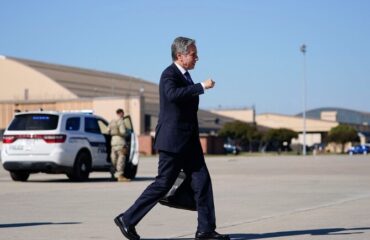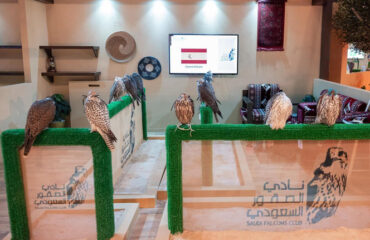How armed drones may have helped turn the tide in Ethiopia’s war
Cheap and efficient drones are increasingly becoming decisive weapons in modern conflicts.

Ethiopia’s 13-month war has seen yet another dramatic turn as the federal government’s counteroffensive against fighters from the northern Tigray region has made substantial advances, reversing the spectacular gains made recently by the Tigrayan forces in their push southwards.
State media said this week the country’s “joint gallant security forces” had retaken the strategic towns of Dessie and Kombolcha, the latest in a series of battleground victories since Prime Minister Abiy Ahmed said last month he would head to the front line and urged Ethiopians to join the fight.
As fighting drags on, the government, with its tiny air force of 22 combat-capable aircraft, seems to have also realised that air power and timely intelligence can make all the difference in a conflict – especially one fought over vast and often mountainous areas like in Ethiopia’s north. Although there has been no official confirmation, analysts have pointed to credible reports saying Ahmed’s government has reached out in recent months to manufacturers of cheap and efficient armed drones hoping that air power will turn the tide in its way.
Photographic evidence has pointed to the presence of Chinese Wing Loong 2 Unarmed Aerial Vehicles or UAVs at Ethiopian military bases, while a Bellingcat investigation in August found strong indications that Iranian armed drones, along with their ground control stations, had been spotted at Semera Airport. The government has also reportedly reached out to Turkey and requested a number of Bayraktar TB2 drones. These are relatively cheap and combat-proven and have been decisively used over several battlefields in recent years.
Armed drones, a one-stop shop
Drones, or UAVs, bring several desirable capabilities together in one neat package.
They are principally security cameras in the sky and are able to beam high-definition real-time imagery back to the headquarters. Once a target has been identified, it can be destroyed on the spot by the guided munitions carried by the drones.
This potent mix of intelligence gathering, reconnaissance and strike capability can be decisive in a conflict, if the drones are used properly.
The country with the most operational experience in using drones in conventional military conflicts is Turkey.
Turkey
Turkey’s Bayraktar TB2 armed UAV is the one drone that has stood out in recent conflicts. It does not carry many weapons, nor does it travel that fast or very far – but these can also be advantages.
The slow flight speed means the drones can loiter easily for hours, focusing on details reconnaissance jets would be hard-pressed to identify. Their short range means they can quickly return to base for refuelling and rearming, being back over the target area in just a matter of hours.
The TB2s’ low relative cost and reliability allow several to be flown at once and enables the maintenance of a near-constant presence over the battlespace, meaning that surprise tactics by one’s adversary will be spotted and much less likely to succeed. Turkish advisers and training staff bring a wealth of knowledge on how to successfully use these systems.
Turkey’s defence and aerospace exports to Ethiopia leapt in the first three months of 2021 to $51m, with further increases in August and September. The TB2s decisive use in three recent conflicts – western Libya, northern Syria and Nagorno-Karabakh – showcased their abilities and the move by drones from effective counterterrorism tools to potent weapons on the battlefield.
China
Turkey is not the only country that has been approached. The Chinese-made Wing Loong 2 armed UAV has been spotted at Ethiopian airbases.
Known as the Pterodactyl, it has a longer range and can carry more weapons.
Able to fly higher than the TB2, it can also stay out of range of most anti-aircraft weapons, flying deep into enemy territory to look for command and control centres, ammunition dumps and marshalling yards, reporting back to base and often using either precision missiles or heavier bombs to destroy high-value targets far behind the front line.
The Pterodactyl can also act as a target designator for short-range ballistic missiles also imported from China. Armed with a 480kg (1,058-pound) warhead, it is able to destroy high-value targets like headquarters and command posts.
Iran
Armed drones consistent with Iran’s Mujaher-6 have also been spotted in Ethiopia.
The Bellingcat investigative site has sourced images of the combat drone at Semera. It has a limited range but can still help Ethiopian government army units, feeding commanders information on the enemy’s movements and is also able to destroy vehicles once identified with its guided Qaim glide bombs.
Decisive weapons
All these drones search the battlefield, guided by remote pilots back at base. Analysts, intelligence specialists, military planners and army commanders can see and share the high-resolution images being fed back giving a far clearer picture of the battlefield and the enemy’s intentions.
The Tigrayan forces have no such capability and would have armoured units, air defence systems, mobile radar sites and command and control posts destroyed at a far greater rate.
The Ethiopian military would also be able to use its meagre air force of 22 MiG-23 and Su-27 fighter jets and 18 Hind attack helicopters to greater effect as the intelligence of the intended target would be more detailed and up-to-date. Chinese Short Range Ballistic missiles, the DF-12, plus Multiple Rocket launcher systems bought from China can also be given far more accurate coordinates because of intelligence gathered by drones.
Inexpensive and effective drones are making themselves felt on battlefields from the Caucusus and the Middle East to North Africa and beyond. The United States, unwilling to share advanced technology, has been sidelined by regional competitors that manufacture armed drones that, while not as efficient, are still able to turn the tide, becoming decisive weapons in any modern conflict.





